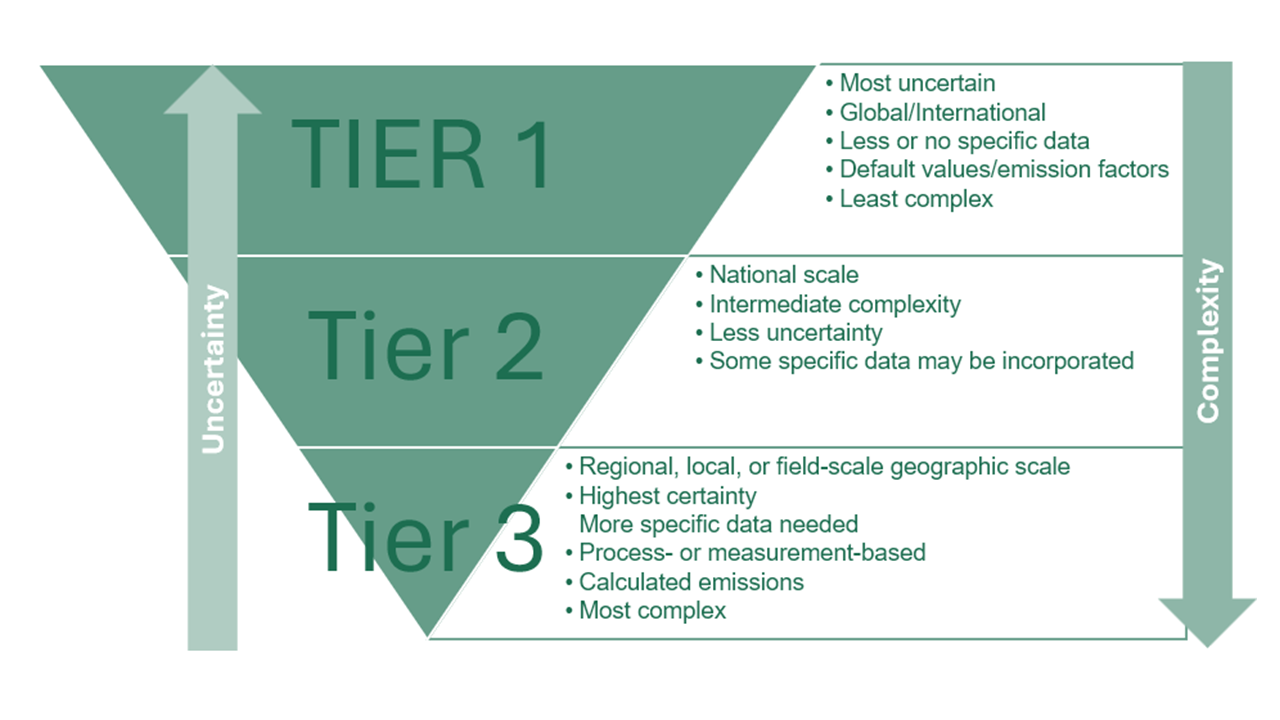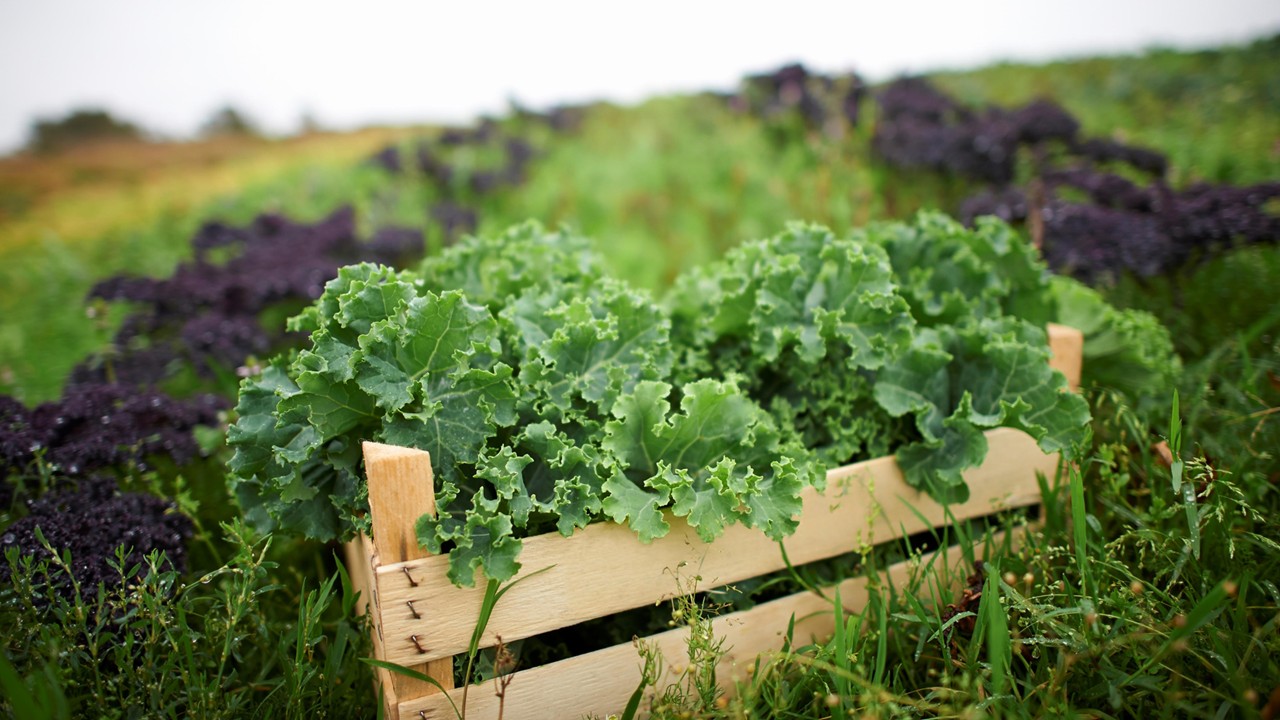Life cycle assessment (LCA) is a growing practice for quantifying the environmental footprint of products. LCAs provide a snapshot of products’ impacts across their entire lifecycle, cradle to grave. The studies can also be used to assess the points in a product life cycle where sustainability interventions make the most impact.
At their best, an LCA can be used to compare the potential outcomes of different interventions, including modeling for long-term impacts. However, this use requires custom modeling beyond the “out-of-box” LCA software and available datasets, and significant effort to gather primary data. While effort-intensive, this type of custom LCA provides a robust baseline for comparing changes to impact over time and informing sustainability initiatives.
Despite the benefits of a well-conducted LCA study, there are significant gaps and inconsistencies that need to be addressed to improve this practice. These gaps are especially apparent with the assessment of agricultural products.
Lack of consistency in life cycle assessment tools
There is a wide range of LCA tools available for agriculture, including commonly used platforms such as the CarbOn Management & Emissions Tool (COMET-Farm), Cool Farm, the Argonne Greenhouse gases, Regulated Emissions, and Energy use in Technologies (GREET) feedstock calculator (FD-CIC), and full LCA analysis platforms such as OpenLCA and SimaPro. The tools and platforms are highly inconsistent in the scope of what they assess, the impacts addressed, and the quality and specificity of the underlying data and methodologies.
For example, COMET-Farm provides a result for greenhouse gas (GHG) emissions per acre for a crop, but the tool does not include the significant GHG emissions from the manufacture of fertilizer used to produce the crop. A more robust LCA would include cradle emissions and emissions from processing and end-of-life cycle. As a result, the same product can have widely different footprints, depending on the tool or platform.
LCAs cannot be easily compared
Ideally, when consumers see information on a product’s footprint, they could easily compare that claim to the footprint of another product. However, even when LCA studies assess the same impact(s) using the same set of basic standards and the same platform, the results still vary. The different results are driven by the scenario, assumptions, data, and methodologies applied, including:
- The boundary and scope of the study
- The functional unit that is defined (for example, 1 kilogram of live weight at farm gate for meat is significantly different from 1 kilogram of carcass weight or processed product)
- The specificity, or tier, and methodology of how emissions and impacts are assessed and the global warming potential (GWP) values used (Figure 1)
- The geographic scale — global, national, regional, state, county, farm, field — applied
- Practices can vary widely across agricultural production, but an LCA must be based on a specific scenario or comparison of scenarios to enable analysis
- The quality and recency of the data used, especially for use of primary versus secondary data sources
- The methodology used to assess land use change
- The time horizon applied, including assessing future shifts such as yield declines, soil health and climate changes, or energy grid transition
- How co-product impacts are allocated
Figure 1. Tiers for Methodology and Emissions Factors

Source: SES, Inc.
With so many variables, it is difficult to compare the results of two LCA studies for the same agricultural product without rigorous analysis of how the studies were conducted. Product-level LCA standards for agricultural commodities could help standardize results and improve comparison.
LCAs are only as good as the underlying data
LCAs share a common thread with technology projects. No matter how robust and innovative the platform is, bad data-in means bad data-out. Unfortunately, even commonly used datasets such as Agri-footprint and Global Feed LCA Institute (GFLI) include only conventionally produced inputs, such as crops and feed ingredients. These datasets lack quality data for sustainable production, including organic systems, complex rotations like intercropping and relay cropping, and regenerative practices including manure use and cover crops. It is critical to identify the best available data for an LCA, including the location, production years, and scale.
Assessing organic and sustainable production systems requires robust LCA methodologies using high quality data. There is a significant need to get more and better LCA data for organic and sustainable production systems.
Living systems are not toasters
LCA studies are more accurate for manufactured goods. Toasters, for example, are made from metals, plastic, and non-organic raw materials. Crops and livestock products, however, are derived from dynamic living systems with complex environmental interactions.
For example, most LCA data for crop production, including datasets like Agri-footprint and GFLI, do not include soil carbon sequestration when assessing GHG emissions. Part of the reason for this gap is the complexity of soil organic carbon (SOC) dynamics which vary by soil type and biological activity, practices used, and weather conditions. The variability is granular, with differences even in the same field. Soil carbon dynamics are also hard to assess given carbon sequestered in soil during one season can be lost the next time a field is tilled. As result, soil carbon, an important facet of sustainable production, is often not included in a standard LCA.
For livestock systems, there is high variability in feed inputs by phase of animal life cycle, how the feed ingredients were produced, where they were sourced, and the agricultural practices used. LCAs commonly divide livestock production into two phases: breeding and feeding. This universal division makes it hard to assess impacts by phase of production for systems like pig production with sow, nursery, and finisher operations. A customized LCA is the only path to identifying impacts by pig phase, including the most impactful sustainability interventions at each point in the life cycle. Given the complexity of living systems, LCA projects to assess agricultural commodities require context of production systems and agronomy.
LCAs can be limited in their assessment
LCAs assess a specific time horizon using historical data, such as the past five years of yield for a given crop. In agricultural production where climate and conditions change, the LCA result may change dramatically in the future. For example, LCA studies that compare conventional production to organic or regenerative systems may identify a lower GHG footprint when yield is higher with intensive inputs. However, under future climate scenarios, organic or regenerative fields may have higher yields with improved soil health and thus, a lower footprint. In other words, the LCA results are not fixed, but specific only to a given time, scenario, and set of assumptions.
Most LCAs include a standard set of midpoint impacts, including: GHG emissions, water use, eutrophication, ecotoxicity, land occupation. This standard set can miss important outcomes of systems, or endpoints, including ecosystem services such as soil health, land and resource scarcity, biodiversity, or preventing erosion. LCAs also do not assess economic impacts such as farm profitability or social impacts.
LCAs should clearly identify the scenarios assessed and discuss limitations in the analysis. LCA studies can also be paired with additional analysis to provide more holistic and complete assessment of a product’s impact. Additional analysis could include using a unit of nutrition (protein, etc.) as the functional unit or a total cost accounting.
Building a Better Life Cycle Assessment
Currently, LCAs are the most widely used method to assess the environmental impact of the products we consume. Despite the gaps identified here, LCAs provide a starting framework for a systems-based view of environmental impacts. A well-designed LCA project can also guide sustainability initiatives and serve as a baseline for tracking progress against goals. LCAs can be further improved by:
- Clearly and transparently documenting the scope, boundary, scenario and assumptions used.
- Improving the quality of data, including accessing primary data, for use in the inventory.
- Developing and applying agriculture-specific LCA standards that address the complexity of assessing living systems and enable more accurate comparison.
- Conducting more LCAs on organic and sustainable production methods to improve datasets.
- Identifying that the results reflect a specific point in time, and address how the results may shift under future scenarios.
- Conduct a more holistic LCA by pairing the study with additional analysis, including how the functional unit is defined and other externalities.
Learn more about SES and our life cycle assessment project work as part of our Sustainability and Consulting services.

